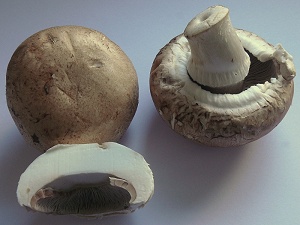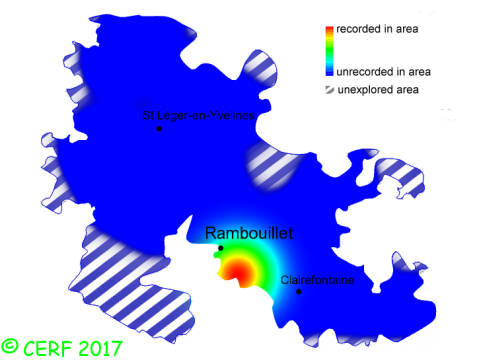| Agaricus bisporus (L Lange) Imbach |
|
|
|
|
|
|
The cap is white or hazelnut brown. The cap surface is not viscid nor sticky. The flesh is turning slowly pink; the odour is pleasant; its texture is fibrous. The gills are free, crowded . The spore print is brown. This species is saprophytic. It grows on the ground. The fruiting period takes place from February to November.
Chemical tests : no reaction to Schaeffer's test. Distinctive features : This is the common Portobello mushroom. Rare in the wild, with a brown cap and veil remnants at the cap margin Agaricus bisporus is rare and confined in the forest of Rambouillet, and is infrequent, more generally speaking . | ||
|
page updated on 14/01/18

